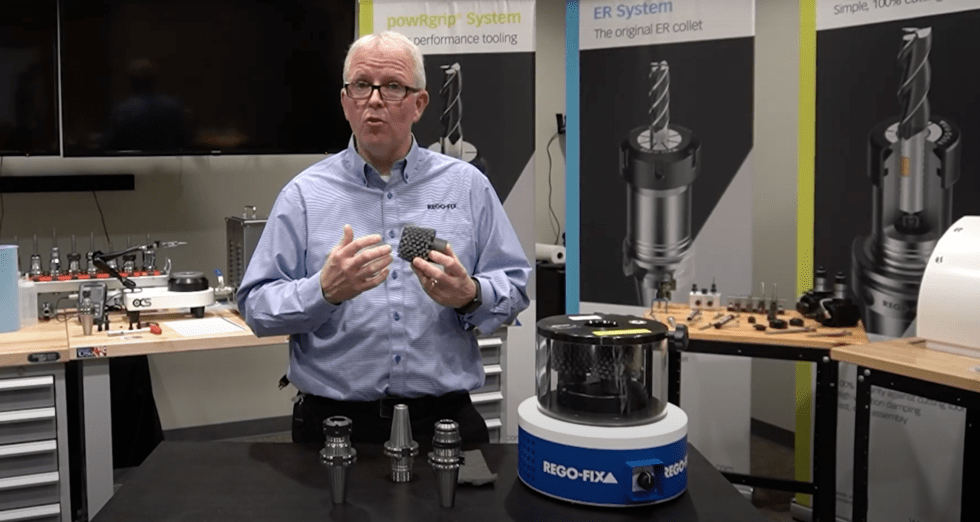Our customers always want to take advantage of the full capabilities of their machine tools. They never want to use anything in a machine that can hamper its performance. That’s why the two keys to proper toolholding – and machining results – are correct setup and standardized routine cleanliness.
Actually, those two procedures fit together into one preventive routine. If a toolholding assembly isn’t set up properly, it can’t perform up to the standards of the machine itself, let alone the toolholding system. Operators need to know how to use torque specs to achieve proper pull-stud and nut torque. That’s why we include these numbers in product publications – and it should come as no surprise that we base these values on clean, degreased assemblies with no burrs stuck inside to impair functionality. So beyond establishing correct setup routines, shops need to emphasize cleanliness because of its enormous impact on machining results.
Our published specs for TIR and clamping force tell you what you can expect when you use our toolholding. Those specs assume that you’ve cleaned your assembly first. Unfortunately, sometimes customers get out of the toolholding-maintenance habit. Maybe they clean the collet but not the toolholder cavity or the threads. They don’t wipe out the spindle each day to make sure no chips remain inside it. They get stuck in a rut and don’t clean everything.
When you’re holding one-tenth or better TIR and class-leading clamping force, everything comes down to cleaning and preparation. Before you set up your tools, take care of every piece of the puzzle. Wipe out the spindle after every job. Make sure the toolholder taper and collet cavity are clean and free of dents, dings or rust. Check for chips embedded in the toolholder threads that prevent you from achieving maximum clamping force. Likewise, are your nut threads clean, and is the face of the nut making secure contact with the collet?
All these items are as essential to your pre-machining checklist as machine maintenance and coolant upkeep. If you wouldn’t let improper coolant concentration rust your toolholders, don’t let chips and grease get in the way of your machining results.
Clamp after clamp, a clean system provides repeatable precision. Toolholders are an investment. The longer they last – and give the best-possible results – the more advantageous the investment. To get the full value out of it, put in the effort to keep it clean. There’s really no such thing as “it’s clean enough.”
If you have questions about proper toolholder-system maintenance, watch our Tech Chats for hints or contact our Tech Team to learn more. We’re always happy to help you get the best results from REGO-FIX products.
by David McHenry, Engineering and Technical Manager, REGO-FIX US

